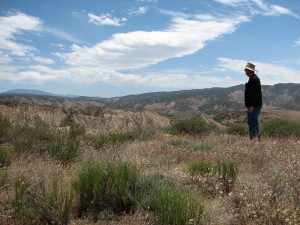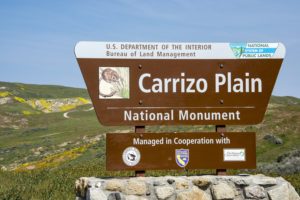
In 2006, ForestWatch worked successfully with rural landowners to defeat a proposal to lease drilling rights on BLM land adjacent to the Los Padres National Forest in the Cuyama Valley. This effort involved utilizing policies put in place to allow the public to challenge such lease sales — policies that are being gutted by the current administration.
On January 31, Secretary Ryan Zinke signed a memorandum detailing ways in which the Department of the Interior will make it easier for oil companies to drill on federal lands. The memo aims to “simplify and streamline the leasing process” and to “expedite the offering of lands for lease.” This would be accomplished by rolling back several policies put in place during previous administrations to better protect the environment and to enhance the public’s ability to weigh in when the federal government proposes to auction off land to oil companies for drilling and fracking.
The memo cuts in half the amount of time the Bureau of Land Management (BLM) must notify the public in advance of an oil lease auction. Previously, the BLM would post a public notice 90 days prior to a planned lease auction. This gave the public more time to effectively process the information and submit comments to the BLM detailing any concerns. Now, the BLM only has to notify the public 45 days in advance of selling an oil lease on federal land.
Another aspect of public input that is being changed is the 30-day public comment period that must occur before the BLM auctions off lands to oil companies. The BLM periodically holds auctions for oil companies to bid on leases for as little as $2.00 per acre. Under Zinke’s new policy, the public comment period before such auctions has been eliminated entirely. This severely impacts the ability for adjacent landowners that would be directly affected by a lease sale or organizations such as ForestWatch to voice their concerns before the sale is completed.
Previously, the public has also had the ability to file formal objections to a lease sale within 30 days of the auction. However, the new memo reduces this period to merely 10 days. In 2006, ForestWatch teamed up with eight rural landowners to formally object to lease sales on 11 parcels near the Carrizo Plain National Monument, Los Padres National Forest, and Bitter Creek National Wildlife Refuge. These objections forced the BLM to withdraw over 10,000 acres of federal land from the lease sale. Last month’s memo would make it more difficult for landowners and organizations to object to such sales in the future.
The memo also eliminates the requirement to incorporate the input of biologists, archaeologists, hydrologists, and other experts when reviewing a potential lease sale. Additionally, the BLM no longer must visit the site of a potential lease sale to evaluate its importance. This means that BLM officials will rely on existing documents and information to determine the impacts of a lease sale on federal lands. This will likely result in their reliance on decades-old review documents that may no longer be relevant to inform lease sale decisions.

Fortunately, the Carrizo Plain’s national monument status protects it from new oil development. Photo by Ronald L. Williams.
While these changes will certainly open up federal lands around the country to increased drilling, we luckily have time before these policies might affect our region thanks to ForestWatch’s legal victory in 2016. We partnered with Center for Biological Diversity and Earthjustice to file a lawsuit challenging the BLM’s plan to open more than 1 million acres of public land and mineral estate in central California to drilling and fracking. A court ruled that the BLM’s Caliente Resource Management Plan — which covers the Carrizo Plain National Monument and areas surrounding the Los Padres National Forest — failed to adequately address impacts of potential drilling and fracking operations on these lands. As a result, no new oil leases can be sold in our region until the resource management plan and its Environmental Impact Statement is updated. This process is expected to take at least 2 years. Furthermore, thanks to the protection of the Carrizo Plain’s national monument status, no new oil leases can be sold within monument boundaries.
While Secretary Zinke and the Trump Administration continue to roll back longstanding environmental protections, local organizations like Los Padres ForestWatch continue to provide the last line of defense for our region’s public lands. We will continue to do everything we can to safeguard our wild places from the harmful effects of oil drilling and fracking.







Comments are closed.